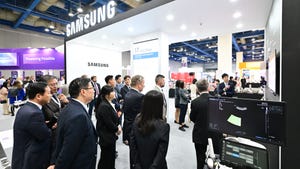SK Telecom Eyes Virtual Packet Core
South Korean mobile operator checks out the potential of a virtual evolved packet core (EPC) to support its 4G LTE services.
November 25, 2013

South Korean mobile operator SK Telecom has been exploring the potential of a virtualized evolved packet core (EPC) and has already completed a proof-of-concept trial with NSN.
According to the vendor, the network functions virtualization (NFV) trial "showed successful results for capacity scaling for both throughput and signaling traffic in connection with smartphone usage patterns," though no details were provided.
Nokia Solutions and Networks (NSN) notes it was one of a number of vendors involved in the exploratory efforts by SK Telecom (Nasdaq: SKM), one of the most advanced 4G operators in the world, and claims it was the only one to "successfully demonstrate a complete EPC solution in a cloud environment," including virtualized Mobility Management Entity (MME) and serving gateway/packet data network gateway elements. (See SKT's LTE-Advanced Subs Growing Fast.)
The vendor's "Liquid Core" solution comprised software-only versions of its EPC elements housed on standard, x86-based IT hardware.
Why this matters
As operators, particularly those involved with the European Telecommunications Standards Institute (ETSI) NFV Industry Specification Group (ISG), consider the potential economic and operational benefits of NFV, a number of network elements have been identified as ripe for virtualization. The evolved packet core has for some time been regarded as a prime opportunity for virtualized elements to be introduced as new network core capabilities are built out by mobile operators to support their 4G LTE services. (See Packet Core Looks 'Ripe' for Virtualization and V Is for Virtualization.)
Carriers around the world are already looking closely at 4G developments in South Korea, as the market is one of the most developed for LTE and LTE-Advanced services: This proof of concept trial gives them another reason to keep a close eye on infrastructure and operational developments in South-East Asia.
Related posts:
— Ray Le Maistre, Editor-in-Chief, Light Reading
You May Also Like










